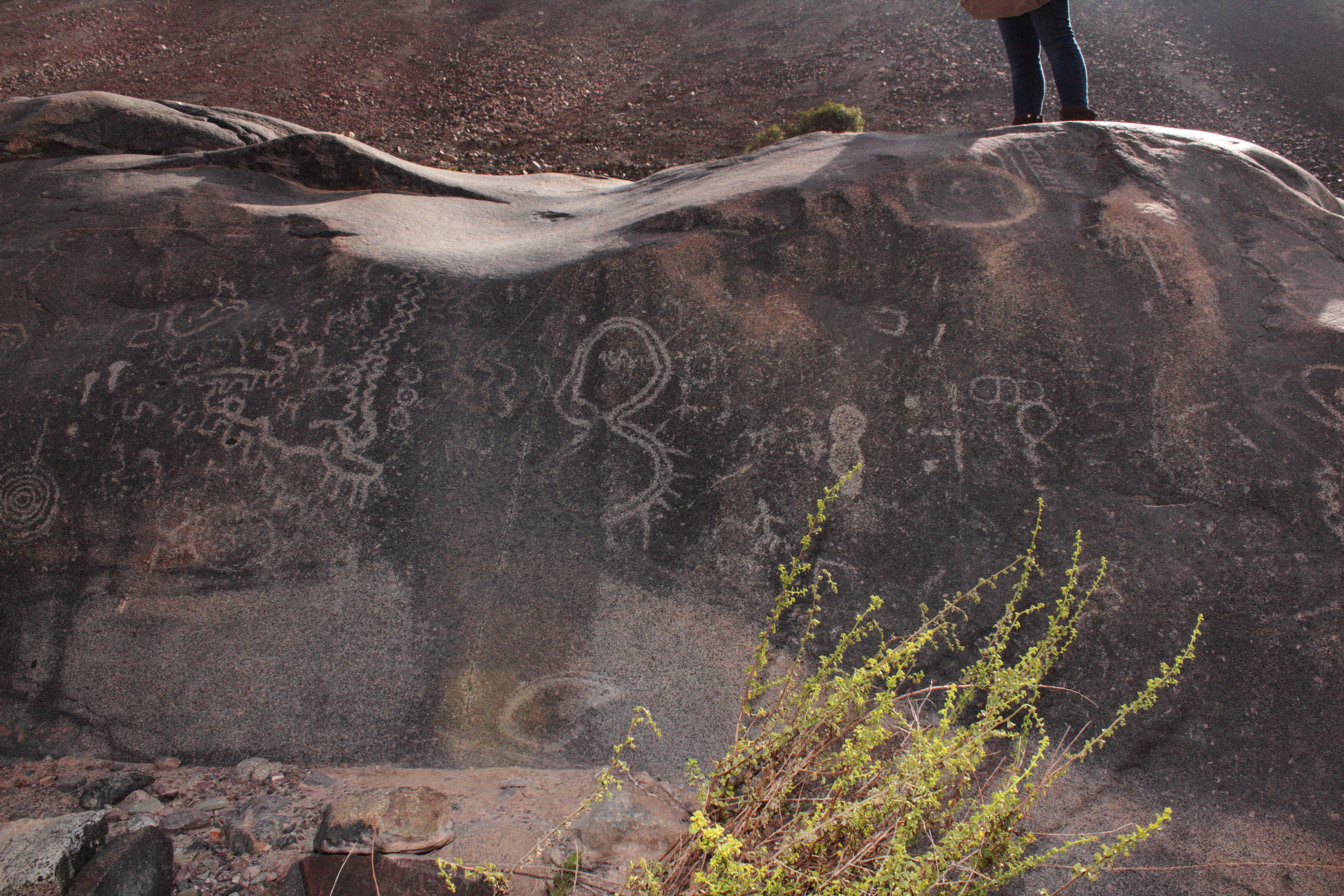My first attempts to derive some quantitative estimate of age from the brightness of the images on the rocks of Rio Mala used the Kublenka Munk theory for a thin layer of material described by its coefficients of absorbance and scattering.
If we postulate that the images are fading not because of erosion of a white layer, but by growth of a dark layer of rock varnish, then we have a scenario that is in a sense reversed.
Looking at the rocks, we can see effects that would be explained by this. There are images which are almost the same colour of the background rock – older even than the old llama.
if five hundred years of varnish reduces the brightness by 20%, then it might seem that 2500 years will reduce it by 100%. It is of course not so simple. We have an exponential curve. But now we can say, that if the brightness is reduced to zero, then it is older than the 2500 years. We have a minimum age.

There is sufficient evidence that there is varnish formation on the rocks, according to the conditions of the surface and its orientation, and that this varnish changes the appearance of the surface and reduces the brightness of engraved images. If the surface conditions are the same, then we can expect varnish formation to be the same across the surface. For larger surfaces, where the inclination changes, we have to be careful. And in any case, we have yet to justify assuming that the rate of varnish formation, for any surface, is constant.
Nevertheless the hypothesis that older images are less bright would appear to have a theoretical basis, for a surface of the same orientation, inclination, and incident moisture. With care, on the southern faces of at least three rocks, this gives us a potential basis for dating the petroglyphs, on a stronger basis than is usual for petroglyph dating.
